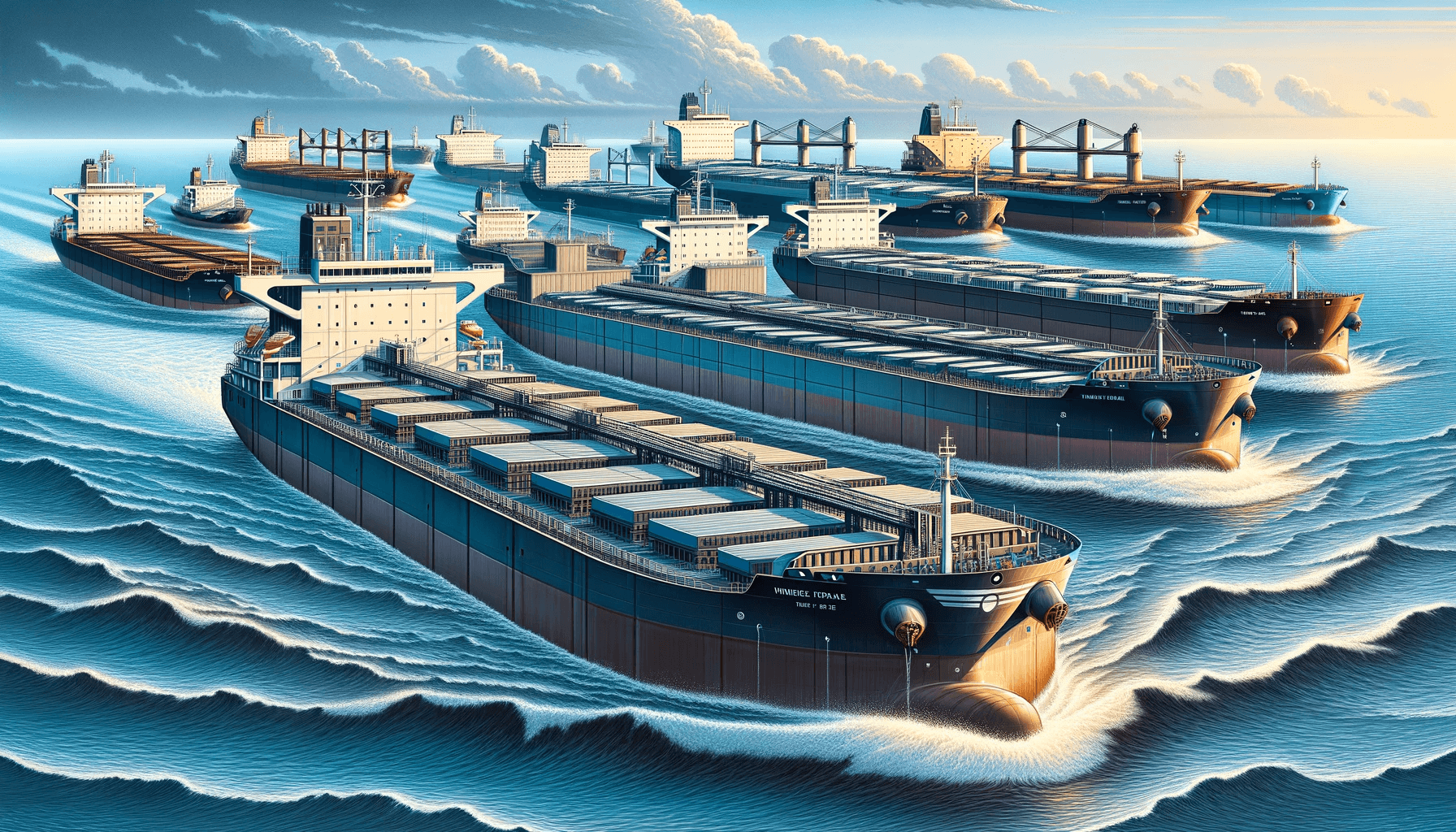

Bulk Carrier Breakdown: Navigating the Different Classes and Capacities
Introduction
Dive into the dynamic world of bulk carriers, integral to global trade and the maritime economy. This guide breaks down the size classifications of bulk carriers, ranging from small coastal vessels to mammoth ships designed for transoceanic voyages. Understanding these classifications is key for professionals in maritime logistics and shipping industries.
Bulk Carrier Classification
Bulk carriers, vital for transporting commodities like grain, coal, and minerals, are categorized based on Deadweight Tonnage (DWT), reflecting their cargo-carrying capacity.
- Coaster Bulk Carriers
- Size: 1,000-10,000 DWT.
- Characteristics: These are the smallest in the bulk carrier category, designed for short sea routes. Their smaller size allows access to smaller ports, making them ideal for regional trade.
- Usage: Typically used for transporting goods like agricultural products, cement, and minerals along coastal routes.
- Handysize Bulk Carriers
- Size: 10,000 – 39,999 DWT, under 160 meters in length.
- Characteristics: Known for their flexibility and versatility, Handysize carriers can access most world ports due to their size. They often have onboard cranes for self-loading and unloading.
- Usage: Transport a wide range of cargoes, including minor bulks like steel, sugar, and fertilizers.
- Handymax Bulk Carriers
- Size: 40,000 – 59,000 DWT, under 190 meters in length.
- Characteristics: Slightly larger than Handysize, offering greater cargo capacity. They are still versatile enough to access a wide range of ports.
- Usage: Suited for medium-sized cargo loads including grains, coal, and iron ore.
- Panamax Bulk Carriers
- Size: 60,000 – 99,999 DWT, under 240 meters in length.
- Characteristics: Optimized to transit the Panama Canal, these vessels represent a significant portion of the global dry bulk fleet.
- Usage: Ideal for large-scale grain and coal transportation, balancing capacity with canal transit abilities.
- Capesize Bulk Carriers
- Size: 100,000 – 199,999 DWT, under 310 meters in length.
- Characteristics: Too large for canal transits, requiring open-sea routing. They have high cargo capacity and efficiency.
- Usage: Predominantly used for transporting major bulks like iron ore and coal over long distances.
- Very Large Ore Carriers (VLOC)
- Size: 200,000 – 299,999 DWT, over 310 meters in length.
- Characteristics: Specialized for bulk transportation, particularly iron ore. They are among the largest bulk carriers in terms of capacity.
- Usage: Primarily used for long-distance, large-volume iron ore transportation.
- Ultra Large Ore Carriers (ULOC)
- Size: 300,000 – 399,999 DWT, over 310 meters in length.
- Characteristics: Designed for maximum efficiency and cargo capacity, often used in dedicated trade routes.
- Usage: Transporting extremely large quantities of ore, often on fixed routes between specific ports.
- Chinamax (Valemax)
- Size: Over 400,000 DWT, over 310 meters in length.
- Characteristics: Among the world’s largest bulk carriers, designed for optimal efficiency in specific trade routes.
- Usage: Mainly used for iron ore transport from major export hubs like Brazil to global destinations.
Chartering Bulk Carriers: Selection Based on Size
Choosing the right bulk carrier involves assessing cargo volume, port limitations, and intended trade routes. Opting for a vessel that aligns with cargo needs ensures cost-effective and efficient logistics.
Conclusion
The varied sizes of bulk carriers cater to different needs in the global maritime trade. From Coaster to Chinamax, each class plays a pivotal role in the transport of bulk commodities, underpinning the efficiency of international trade and logistics.
Related posts


LNG Tanker Valuation: What Influences the Sale Price?

Buy and Sell Offshore Vessels






